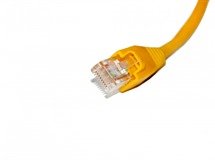In the private
sector, things are clearly moving in a different direction, with greater
investment in network infrastructure making IP surveillance and networked
security management systems incorporating access control, far more enticing.
If you’re
wondering about future directions, what’s interesting when considering major
installations is that those systems manipulating legacy analogue infrastructure
are doing so in a way that drives them into a networked environment – they’re
not tipping IP cameras into analogue multiplexers or storing image streams on
VCRs.
It’s been
observed before in SE&N that the hybrid middle ground occupied by the
electronic security industry might be occupied for some time and it appears
that this position is correct. As long as there is uncertainty over whether or
not HD or higher rates of megapixel will prevail there will be a fallback
position for some, particularly those with legacy cabling, in which deploying
affordable and reliable analogue cameras makes sense.
The investment in
HD cameras from some of the IP CCTV sector’s leading lights does suggest HD
will be a serious way-station for IP camera technology in the years ahead. The
other alternative, and a perfectly realistic one, is that the market will
diffuse, with a range of cameras available from different manufacturers
offering a range of performance possibilities.
You could argue
that the current situation which sees analogue cameras, basic IP cameras, HD
cameras, and big megapixel cameras like Avigilon all selling into the same
market proves this state of diffusion is already here. There really are cameras
for every application and that includes the applications within applications
that exist on every site. There’s no chance that one quality fixed camera and
one high powered PTZ dome camera will handle all the jobs of the future in the
way they have in the past.
With the release
of Pelco’s Sarix, almost every major manufacturer now has a serious presence in
the IP camera market though this has not meant the end of hybrid DVRs or NVRs.
Having said this, things are changing in storage. We are covering four
surveillance case studies in this issue of SE&N and all of them are
employing off-the-shelf storage solutions from a range of manufacturers – none of
which is a security specialist.
What is clearly
driving this shift is the fact that increasingly clever users want more
flexible solutions, including a wider choice of software management options,
and they want to pay less for them. Adding to the diffusion is the fact very
few end users drive their systems across general data networks. Almost all new
systems are installed on subnets with servers allowing network access to
cameras and storage arrays from a central location.
Another
interesting development relates to the delivery of management software. Some
manufacturers charge for this management software while others offer management
software free. Clearly we are on an interesting trip and while fiscal pressures
may delay our time of arrival the destination is not in question.








